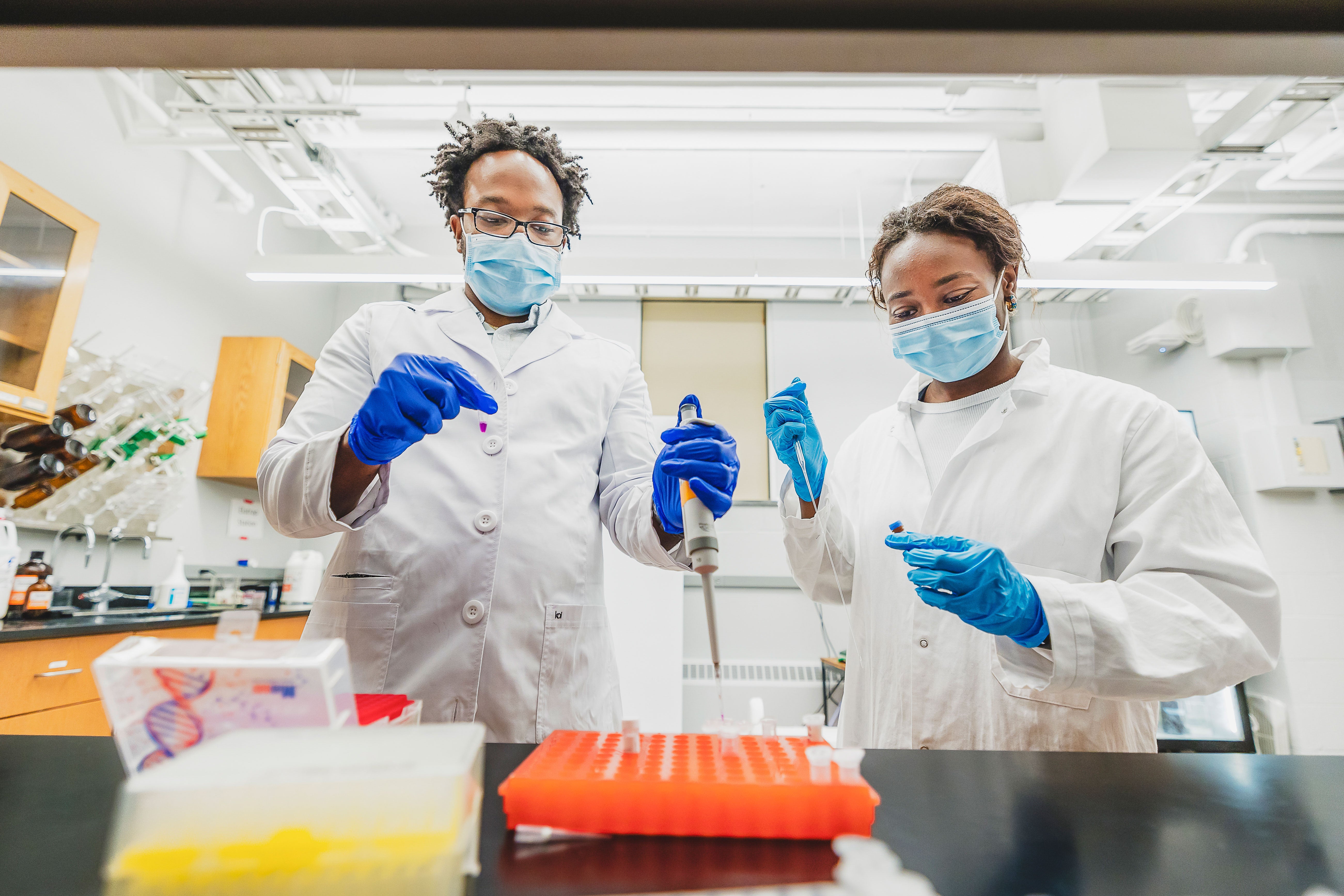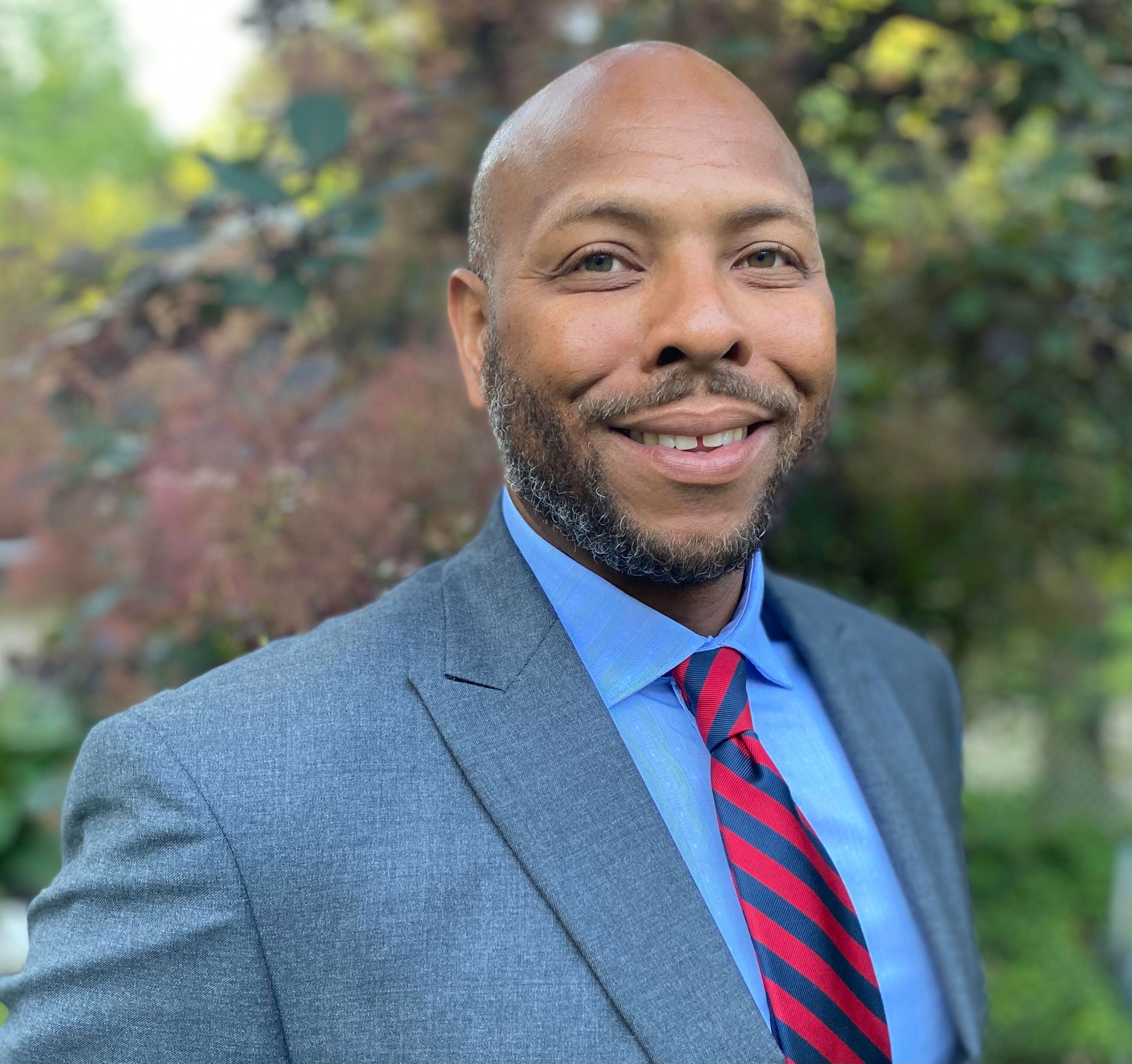lens
Research Exposure
Summer program gave students from underrepresented backgrounds experience in scientific labs
 Photo: Matt Shiffler
Photo: Matt ShifflerParticipants in the inaugural Interdisciplinary Research at the Interface of Health Science and the Environment summer program included, from left: Amy Gao, Evan Weston, Justin Creary, Brahaan Singh, Gaius Takor (a post-doctoral research associate who coordinated the program), Linzy Malcolm, Danyel Crosby, Yongshan Mei and Barrington Henry.
Justin Creary arrived at a campus lab last summer, excited for the medical research experience. But the Case Western Reserve undergraduate also felt a bit intimidated: What if the lab team combating antibiotic resistance expected him to know more chemistry or biology?
“It was the opposite,” said Creary, now a sophomore. “They walked me through steps so I could do things on my own in the future.”
 Photo: Matt Shiffler
Photo: Matt ShifflerCWRU Students Yongshan Mei and Justin Creary spent the first part of the summer working with Karen Abbott, biology professor. They both used mathematical modeling to explore diseases that cross to humans from other species. Mei examined ways COVID-19 might spread, and Creary focused on how Ebola moves from wildlife to humans.
Creary emerged with more knowledge—and a new mindset. “I learned to embrace being uncomfortable,” he said, “knowing I will get comfortable as I have time to learn.”
His experience came in a pilot summer program that exposed undergraduates from diverse or historically underrepresented backgrounds to campus research that tackles problems at the intersection of human health and the environment.
 Photo: Matt Shiffler
Photo: Matt ShifflerMorgan State University student Barrington Henry and Ohio State University student Linzy Malcolm worked in the lab of chemistry professor Blanton Tolbert to characterize the 3D structure of viruses that contain RNA as their genetic material. The students focused on viruses causing the common cold, and hand, foot and mouth disease.
“We wanted to build something overarching, interdisciplinary, bigger than our own labs and departments out of the exciting research we saw around us,” said Karen Abbott, PhD, a biology professor who developed the initial concept with Blanton Tolbert, PhD, the Rudolph and Susan Rense Professor in chemistry and vice dean of Diversity, Equity and Inclusive Excellence at the university’s School of Medicine.
What they and two other faculty members—Vivien Yee, PhD, from the medical school, and Bill Yu, PhD, from Case School of Engineering—built and directed is Interdisciplinary Research at the Interface of Health Science and the Environment, or IRIHSE.
They aim to expand the initiative to include more students in the summer program and additional interdisciplinary faculty collaborations.
 Photo: Matt Shiffler
Photo: Matt ShifflerCWRU student Brahaan Singh first worked with Xijin Zhang, a PhD student in the research lab of Bill Yu, PhD, the Opal J. and Richard A. Vanderhoof Professor and chair of the Department of Civil and Environmental Engineering. The project focused on making soil less prone to erosion by growing fungi deep within it. Singh later worked in the lab of Vivien Yee, PhD, an associate professor of both biochemistry and pharmacology.
The first group of students—eight from CWRU and two from universities outside the region—were nearly all rising sophomores. Most had two experiences, one focused on the environment and the other on health sciences.
The program provided a stipend and campus housing.
Tolbert said he co-launched IRIHSE because of the “major gaps” in racial representation and diversity he’s seen throughout his career in the fields of STEM [science, technology, engineering and mathematics].
He wants more students exposed to cutting-edge research and to see the rewards of a career as a basic scientist. “Sometimes you don’t know what you like until you try it,” he said.
Program Directors

Karen Abbott

Blanton Tolbert

Bill Yu

Vivien Yee
Funding a Summer Experience
Several university programs or offices funded the 2021 undergraduate research program. They include: the Expanding Horizons Initiative at the College of Arts and Sciences; the Support of Undergraduate Research and Creative Endeavors (SOURCE) office; the Student Success office; and the Office of the Provost. The National Institutes of Health provided supplemental funding.





